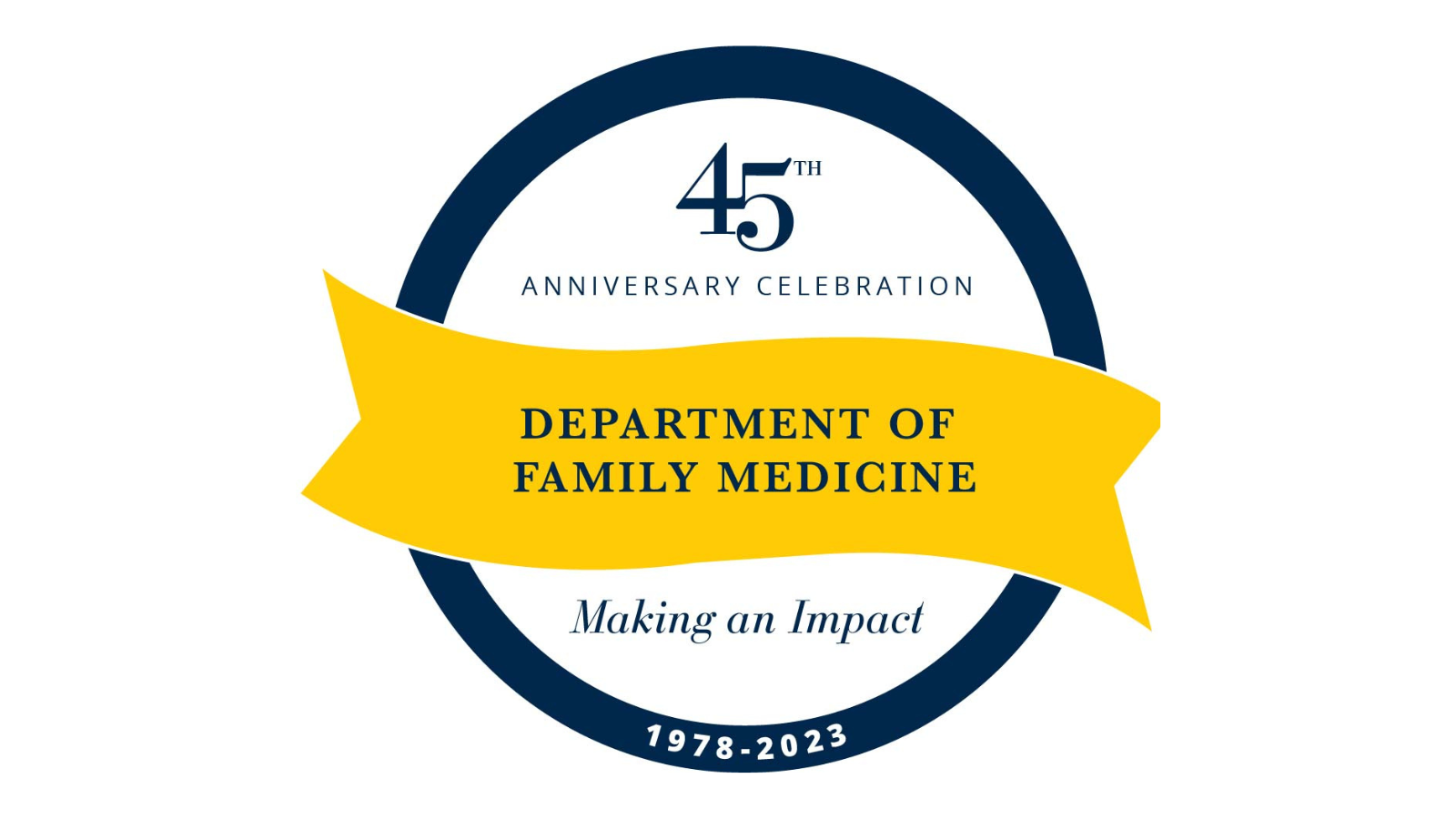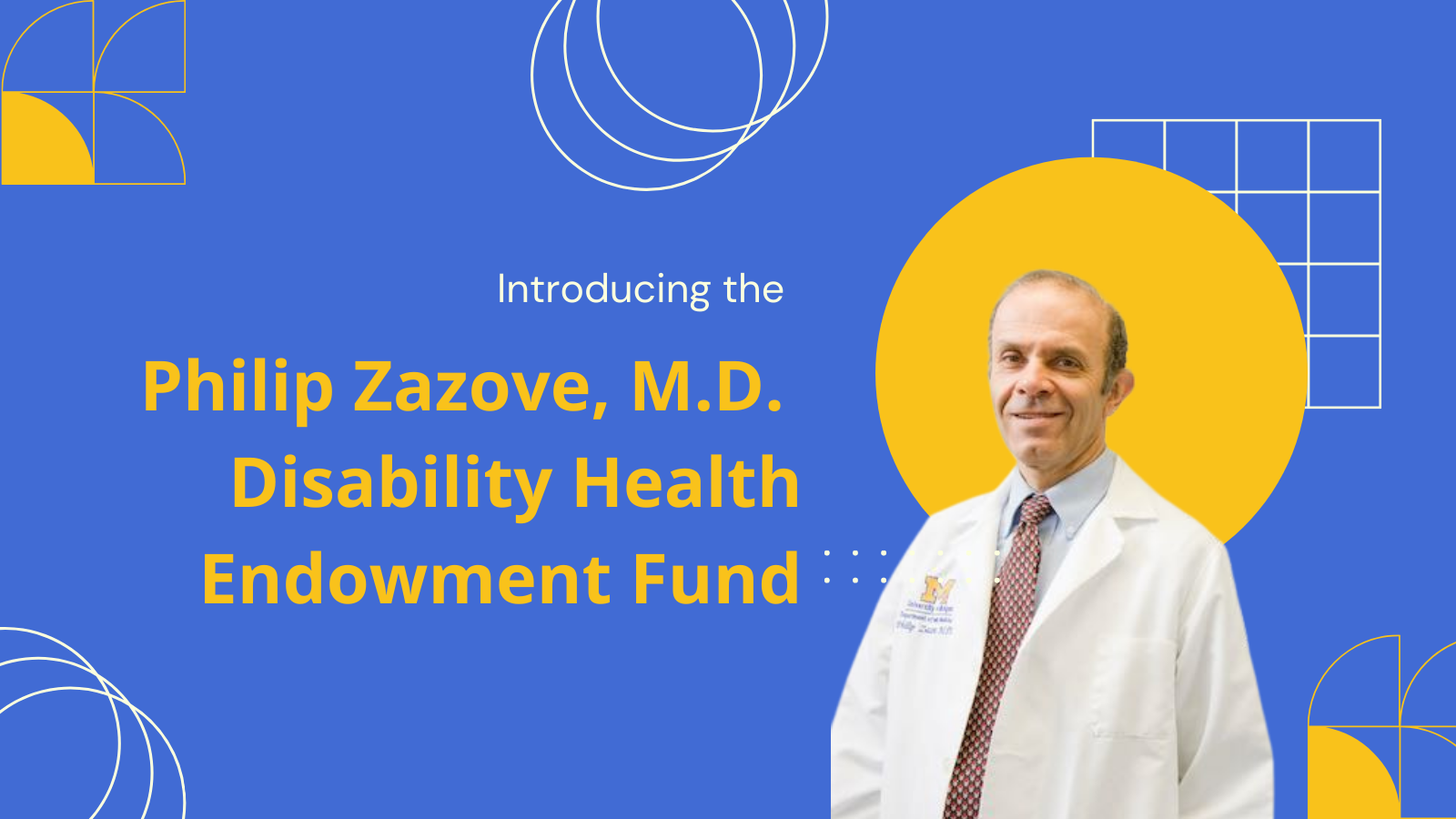Assistant professor Michael M. McKee, M.D., M.P.H. and Elham Mahmoudi, Ph.D., M.B.A., M.S. and clinical lecturer Alicia J. Cohen, M.D. will present their research at the American Public Health Association (APHA) annual meeting in Atlanta, Georgia, from November 4-8th. The APHA meeting is the largest public health meeting in the world, bringing together thousands of public health professionals, at all levels of leadership and practice. The theme of this year's meeting is "Creating the Healthiest Nation: Climate Changes Health." U-M Family Medicine faculty will share work on topics as diverse as clinical care and access for deaf and hard of hearing populations, health informatics and EHR design, and population health and the effects of the Affordable Care Act's Medicaid expansion. See an overview of the U-M Family Medicine presentations at APHA 2017 and follow along with Dr. Cohen @justfooddoc, as she tweets live from #APHA17.
Improving Hearing Loss Detection Through An Electronic Clinical Alert; Initial Early Auditory Referral- Primary Care (EAR-PC) Results
Michael McKee, MD, MPH, Melissa Plegue, MA, Lauren Schleicher, MA, Paul Kileny, PhD, Elie Mulhem, MD, Lee Green, MD, MPH, Mary Rapai, MA and Philip Zazove, MDSunday, November 05, 2017 01:30 PM - 02:30 PM
Background: Hearing loss (HL) is a common yet largely untreated problem. Primary care physicians (PCPs) are ideally situated to identify HL. We evaluated the feasibility of electronic clinical alerts (ECA) to increase the family physician referral of high-risk patients for HL at 5 Michigan sites. The EAR-PC project studied how to maximize appropriate referral of patients 55 and older at risk for HL using ECAs tailored for ease of use. All participating patients completed a consent form and hearing handicap index (HHI). Clinicians received an educational program about HL and the clinical alerts. Method: Descriptive statistics evaluated specific outcome measures for the project’s year 1: number referred to audiology and percentage of referred seen by audiology who had a HL. Study period referral rates were compared with baseline and also between those with and without HL suggested by the HHI using chi-square tests. Results: Clinicians referred 320 of 5034 eligible patients (6.4%) to audiology, significantly greater than baseline referral rates (3.5%; p <0.001). Among 416 patients completing the HHI, 136 (32.7%) had scores indicating probable HL. Referral rates were higher among these patients (HHI scores >=10; 22.8%) vs those with HHI scores <10 (10%; p-value<0.001). Among patients referred, 124 (39%) saw audiology with 7 (5.7%) not having HL. Conclusion: ECAs increased appropriate audiology referrals by PCPs from baseline. Patient and physician satisfaction were high.
Read more about the EAR-PC study on the Michigan Medicine MHealth Lab Blog
Effect of Medicaid Expansion Under the Affordable Care Act on Preventive Services and Access to Care
Elham Mahmoudi, Ph.D., Alicia Cohen, MD, MSc, Jason Buxbaum, MHSA, Wassim Tarraf, and Caroline Richardson, MD
Tuesday, November 07, 2017 10:50 AM - 11:10 AM
Background: As the future of Medicaid expansion in 32 states and the District of Columbia is debated, understanding the extent to which coverage expansions have improved access to primary care and use of evidence-based preventive services is critical. Data and Methods: We analyzed data from the 2013-2014 Medical Expenditure Panel Survey, which is nationally representative of the non-institutionalized U.S. population. We applied the difference-in-difference (pre-post with a comparison group) approach to examine the effect of the Medicaid expansion under the Affordable Care Act (ACA) on measures of access and use of preventive services. The treatment group included individuals 18-64 with no insurance in 2013 who gained Medicaid coverage in 2014 (n=216); the comparison group included individuals in the same age group who continuously had Medicaid in both years (n=969). We used inverse propensity score weighting to control for selection bias between the two groups. Results: Medicaid expansion increased the odds of using preventive services for blood pressure checks (OR=2.10;CI=1.16-3.77) and flu vaccine (OR=1.73;CI=1.01-2.98) over the past year. For access measures, Medicaid expansion increased the odds of at least one office visit (OR=2.10;CI=1.11-3.99) and decreased the odds of unmet medical needs (OR=0.24;CI=0.07-0.81) and delay in getting required medical care (OR=0.25;CI=0.08-0.83). Conclusion: Given the ability to measure person-specific changes, nationally representative longitudinal cohort data is uniquely valuable for evaluating the Medicaid expansion. Despite the sample size and time span limitations, our findings provide preliminary evidence that the ACA’s Medicaid expansion improved access to and use of recommended preventive services.
Effect of state Medicaid expansion on SNAP participation and food security
Alicia Cohen, MD, MSc, Noura Insolera, PhD2 and Julia Wolfson, PhD MPP
Wednesday, November 08, 2017 10:30 AM - 10:50 AM
Introduction: Diet-related disease is disproportionately concentrated in low-income communities where many families struggle to afford nutritionally adequate foods. This financial strain is often more pronounced among those experiencing acute and/or chronic medical conditions. Little is known about the potential economic spill-over effects of Medicaid expansion on SNAP enrollment and food insecurity. Methods: Using data from the 2007-2015 Panel Study of Income Dynamics (PSID), a difference in differences approach will be used to explore changes in SNAP enrollment and benefits between states that expanded Medicaid and those that did not. Secondly, we will use categorical logistic regression models and 2015 PSID data to examine the associations between Medicaid enrollment and/or SNAP participation with food insecurity. Results: Although the 2015 PSID data have not yet been released (expected release May 2017), preliminary results using 2013 data show that fewer families in Medicaid expansion states received SNAP benefits (12% vs. 14%), had a family member who was uninsured in the past year (18% vs. 23%), or were SNAP eligible (15% vs. 20%) compared to non-expansion states. The percentage of families with at least one family member enrolled in Medicaid as of 2013 was similar (15%). Final analyses will present changes in Medicaid enrollment post-expansion, as well as any associated changes in SNAP enrollment and food insecurity. Discussion: This research will provide important and timely evidence informing the policy debates around the future of the Affordable Care Act and the upcoming Farm Bill, particularly with regard to SNAP funding and food security.
Read more on one of Dr. Cohen's efforts to address food insecurity from primary care practice waiting rooms.
Does Hearing Loss Affect Access to Health Care for Older Individuals with Hearing Loss?
Michael McKee, MD, MPH, Elham Mahmoudi, Ph.D. and Philip Zazove, MD
Wednesday, November 08, 2017 11:10 AM - 11:30 AM
Background: Hearing Loss is common among individuals 50 and older and is associated with higher prevalence of chronic conditions and health burdens. It is less clear if hearing loss affects access to care. Data and Method: We examined the association between hearing loss and access to medical care and prescription drugs among individuals 50+ with and without hearing loss. We used nationally representative 2013-2014 Medical Expenditure Panel Survey data. Our sample included 1,977 adults with hearing loss and 17,399 without. We applied an inverse propensity score weighting and regression modeling to adjust for any potential differences in health and socioeconomic conditions between the two groups. Results: Adults with hearing loss were more likely to be white, less educated, poorer, and hold public insurance (p <0.001). They were also more likely to have hypertension, heart disease, stroke, emphysema, high cholesterol, diabetes, arthritis, and asthma (all p <0.05). The odds of reporting unmet medical needs (OR=2.76; CI=1.84-4.13), experiencing delays getting medical needs (OR=2.05; CI=1.50-2.80), and unmet prescription drug needs (OR=2.57; CI=1.81-3.65) were higher among individuals with hearing loss compared with population norm. Conclusions: Individuals with hearing loss aged 50+ struggle with access to health care and prescription drugs. Given that prior research has demonstrated that hearing loss not only is associated with higher health burdens from different health conditions but also encounter significant health communication barriers, this is concerning. Health care professionals and policy makers need to ensure that health care is accessible and equitable for individuals with hearing loss.
Installing an Accessible and Integrated Clinical Climate for Deaf Patients
Michael McKee, MD, MPH, Leslie Pertz, LMSW, NIC, Melissa Plegue, MA, Kelley Wyse, M.Ed, Kathleen Diehl, MSW, Stacey Klett, MHSA and Philip Zazove, MD
Wednesday, November 08, 2017 01:30 PM - 01:50 PM
Communication barriers frequently isolate Deaf sign language users from health care programs and outreaches. As a result, Deaf individuals struggle with mental health inequities. We implemented a study to address this. Our objectives: 1) identify barriers to mental health services for Deaf persons; and 2) design and pilot accessible, integrated behavioral health care for this population, scalable for other integrated health centers in the state of Michigan. The team translated and developed mobile-based apps for two different mental health measures (PHQ9 and GAD7) to improve screening rates for Deaf patients. These, plus a psychosocial acuity index, were administered to 42 DHH patients at one clinic over 6 months. Nearly half of the patients (20/42) were found to have clinically significant levels of depression and/or anxiety. Furthermore, 49.2% of these patients had high/critical psychosocial acuity indexes versus 16.4% of the non-Deaf patients seen at the same clinic. Deaf patients with mental health or psychosocial management needs were given the opportunity to enroll in an integrated health program led by two family physicians and one social worker. This involved either telemedicine or in-person visits for counseling and help. The program significantly lowered depression (PHQ9 8.8 to 5.6; paired t-test p=0.021) and anxiety scores (GAD7 9.1 to 5.4; p=0.002) and increased overall patient satisfaction during the program’s implementation period. An overview of the integrated clinical model and the steps to develop an accessible and accommodating environment will be presented.
Find more information about U-M Family Medicine's tailored clinical services for deaf patients at the Deaf Health Clinic.



